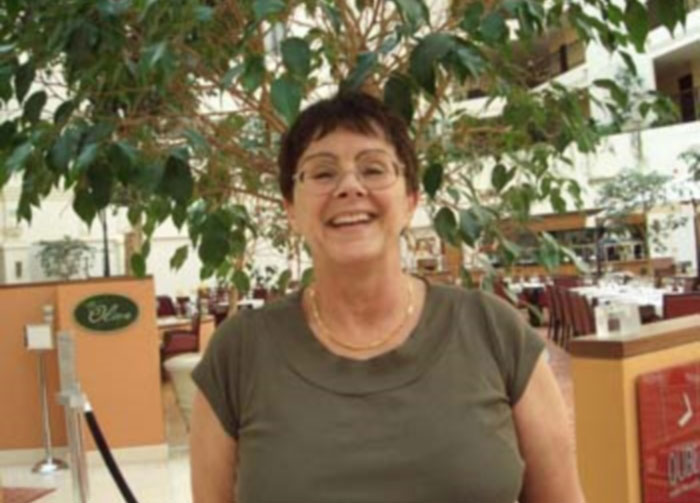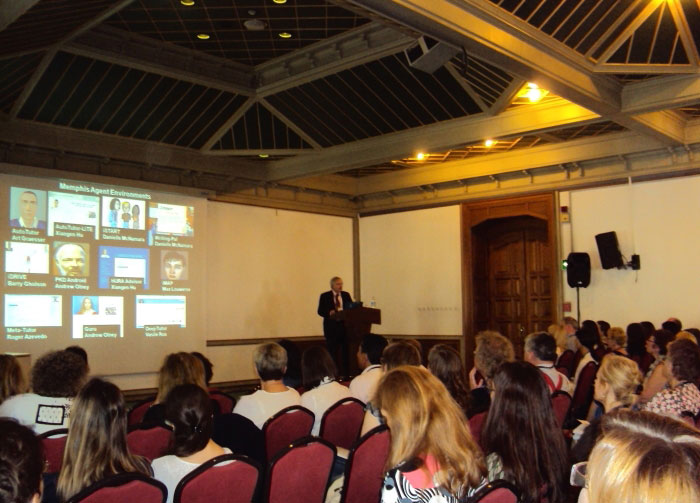The conference started on Thursday 23 May with two SIG Meetings, one on Assessing Writing and Assessing for Academic Purposes, led by Claudia Harsch of the University of Warwick, and one on Classroom-Based Language Assessment, led by Dina Tsagari of the University of Cyprus.
These meetings included some interesting presentations in the respective subfields of Language Assessment and gave the participants a successful warm-up to the main conference presentations which started on Friday morning.
All through the conference, we had the chance to be exposed to the latest research in the field both in the keynote speeches as well as in the parallel sessions.
Actually, what made this conference even more interesting was that language assessment was approached from many different angles and points of view, both in particular national contexts as well as in more generalized ones.
 Starting with the keynote speakers, the first one was Professor Liz-Hamp Lyons of the University of Bedfordshire who spoke on “The challenge of classroom-based assessment”.
Starting with the keynote speakers, the first one was Professor Liz-Hamp Lyons of the University of Bedfordshire who spoke on “The challenge of classroom-based assessment”.
More specifically Professor Lyons demonstrated how classroom-based assessment (CBA) can be synonymous to formative assessment since its fundamental issue revolves around how much it matters how teachers teach and also integrate assessment into their teaching.
She then presented us with the four challenges of CBA with the first one being untangling the terminology in order to be able to actually pinpoint what is CBA.
The second challenge is to formulate at least some very important classroom principles so that CBA can be differentiated from traditional testing, inasmuch as CBA should not just be seen as a series of mini tests but mainly it should focus on real-life tasks.
These principles mainly focus on setting clear goals, designing appropriate assessment tasks and communicating assessment criteria to all stakeholders with an emphasis on the necessity of two-way feedback.
Closely related to these principles was the third challenge Professor Lyons presented us with, which concerned EALTA in the sense that, as an association involved in language assessment, it should be concerned with whether these principles hold true for learners of an L3 or L4 and whether some additional ones should be considered.
Last but not least, the fourth challenge is to actually educate teachers in this new form of CBA and assess its effectiveness in students’ command of English and their attitude towards language learning.
 The second plenary speaker was Professor Arthur C. Graesser of the University of Memphis who reported research on automated text analysis systems that analyze edited texts, student writing, speeches and conversations.
The second plenary speaker was Professor Arthur C. Graesser of the University of Memphis who reported research on automated text analysis systems that analyze edited texts, student writing, speeches and conversations.
His primary focus was on a system called Coh-Metrix (http://cohmetrix.com), a system available for free, which analyzes texts on multiple measures of language and discourse aligned to the relevant theoretical frameworks.
Five major factors that systematically vary according to text type and level of difficulty are incorporated in this system and these are narrativity, syntactic simplicity, word concreteness, referential cohesion and deep cohesion.
Professor Graesser also informed us that this system, together with some other more sophisticated ones, has been used to also assess students’ oral skills especially in conversation.
The last keynote speaker was Dan Douglas, Professor Emeritus at the Iowa State University, who spoke on the impact of assessment within the context of aviation English.
He focused particularly on the current International Civil Aviation Organization language proficiency requirements both for native and non-native speakers of English stating that these tests ignore a number of factors such as aviation experience and expertise, professional knowledge of both pilots and air traffic controllers, adherence to standard conventions of phraseology in the field and a shared responsibility for misunderstandings and for communicative repairs that may cost lives.
